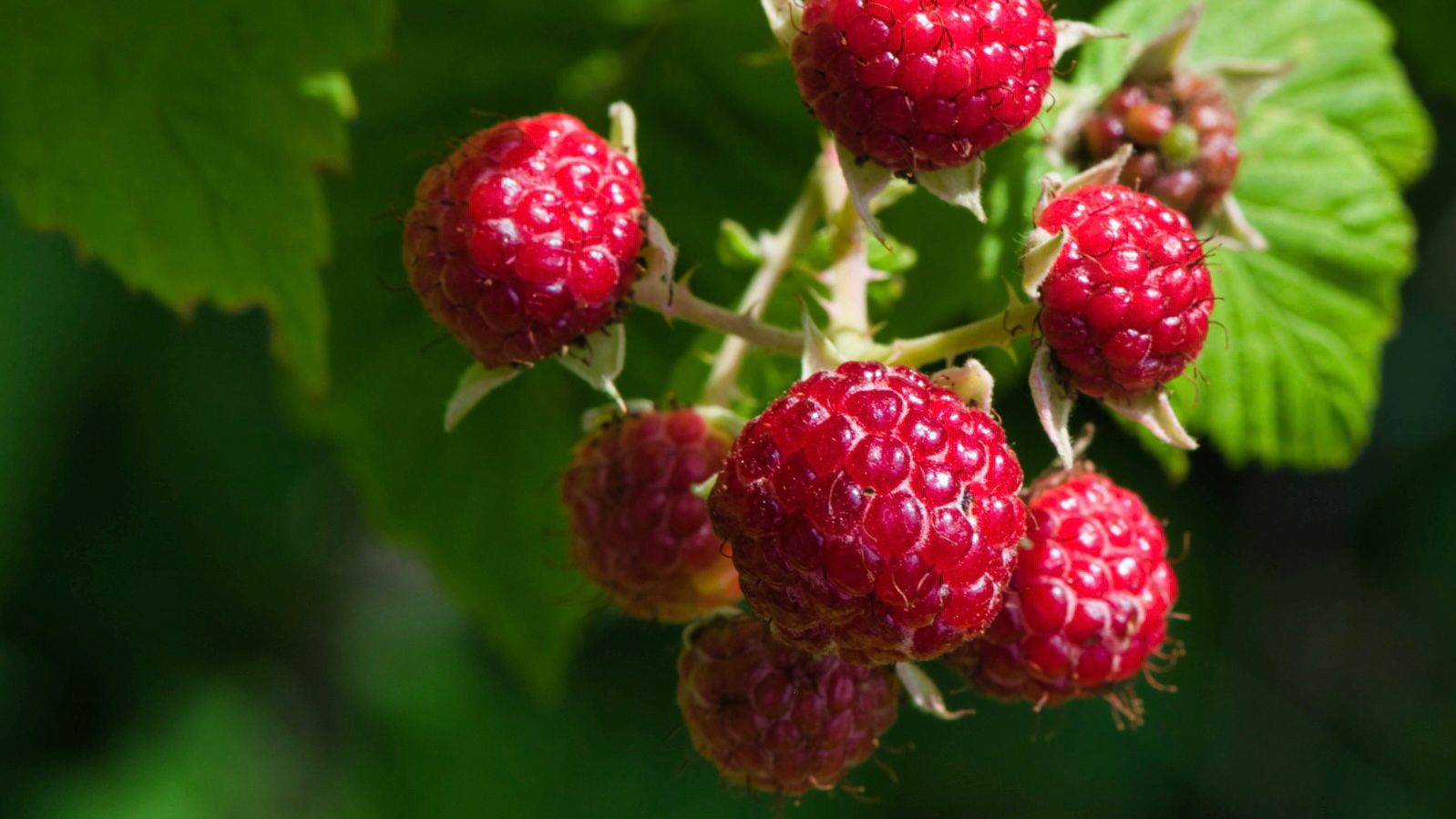
How to Grow Raspberries at Home: 10 Tips for a bountiful harvest
Raspberries are a delicious and nutritious addition to any home garden. With their sweet, tangy taste and high vitamin C content, they’re a great choice for both eating fresh and incorporating into jams, jellies, and baked goods. If you’re interested in growing raspberries at home, here are some tips to help you get started.
Tip#1: Choose the right location
When it comes to growing raspberries, location is key. These plants prefer full sun and well-drained soil. They also need a location that is protected from strong winds, as they can be quite delicate. If you’re unsure about the soil conditions in your garden, consider doing a soil test to ensure that your raspberries will have the right environment to thrive.
Tip#2: Choose the right variety
There are many different varieties of raspberries available, so it’s important to choose one that is well-suited to your climate and growing conditions. Some varieties, like the everbearing “Autumn Bliss,” produce fruit all season long, while others, like the “Latham,” are particularly well-suited to hot, dry climates. Be sure to research the different varieties available and choose one that will do well in your area.
Tip#3: Plant at the right time
Raspberries should be planted in the spring, after the last frost has passed. This will give them plenty of time to establish their roots before the hot summer weather sets in. Be sure to plant them in a location that receives full sun, and prepare the soil well by adding organic matter and fertilizer.
Tip#4: Train and prune your plants
Raspberries need to be trained and pruned to encourage healthy growth and a bountiful harvest. Be sure to train the canes to grow up a trellis or along a fence, and prune them back each year to remove any dead or diseased wood. Additionally, be sure to remove any suckers that may appear at the base of the plant.
Tip#5: Water regularly
Raspberries need regular watering to thrive. Be sure to give them a deep watering at least once a week, and more often during hot, dry weather. Additionally, be sure to mulch the soil around the base of the plant to help retain moisture.
Tip#6: Fertilize regularly
Raspberries are heavy feeders, so they will need regular fertilization to produce a bountiful harvest. Use a balanced fertilizer and apply it at the base of the plant. Additionally, be sure to side-dress with compost or well-rotted manure to provide additional nutrients.
Tip#7: Keep an eye out for pests and diseases
Raspberries are susceptible to a variety of pests and diseases, so it’s important to keep an eye out for any signs of trouble. Common pests include raspberry beetle and raspberry fruit moth, while common diseases include raspberry cane blight and raspberry leaf spot. Be sure to take action as soon as you notice any signs of trouble to keep your plants healthy.
Tip#8: Harvest at the right time
Raspberries are ready to be harvested when they are fully ripe and have a deep, rich color. Be sure to pick them regularly to keep the plant producing fruit. Additionally, be sure to remove any overripe or damaged fruit to keep the plant healthy and productive.
Tip#9: Keep your plants well-weeded
Raspberries need plenty of space to grow and produce a bountiful harvest, so be sure to keep the area around the plants well-weeded. Weeds compete with the plants for water and nutrients, so removing them regularly will help to ensure that your raspberries are getting everything they need to thrive. Additionally, be sure to mulch around the base of the plants to help prevent weeds from germinating.
Tip#10: Enjoy your harvest
After all your hard work, it’s time to enjoy the fruits of your labor. Raspberries are delicious eaten fresh, but they can also be used in jams, jellies, pies, and other baked goods. They can also be frozen or dried for later use. Whatever you decide to do with your raspberries, be sure to enjoy them while they are at their peak of freshness.
Growing raspberries at home can be a rewarding experience. With a little bit of care and attention, you’ll be able to enjoy a bountiful harvest of delicious and nutritious raspberries. Remember to choose the right location, variety, and timing; to train and prune your plants; to water and fertilize regularly; and to keep an eye out for pests and diseases. And, of course, enjoy your harvest!
If you are interested in growing other fruits, check out these other articles: How to grow dates, How to grow mango, How to grow pomegranate, How to grow pomelo, How to grow kiwi, How to grow strawberry, How to grow currants, How to grow khaki, How to grow currants, How to grow cranberries, How to grow bananas, How to grow citrus, How to grow blueberries, How to grow blackberries, How to grow pineapples, How to grow lemons, and much more.













